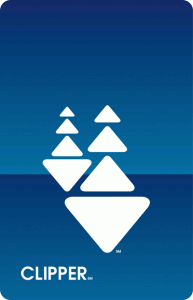The Road to Hell is Paved with Good Intentions.
This year, the Metropolitan Transpiration Commission introduced the new Clipper Smart Card. Public transit riders all over the Bay Area can now use a convent piece of plastic to pay for their BART trains, buses, MUNIs, etc. Just swipe the Clipper Card past one of the little readers, and the gates open to let you in and out of the station or pay for the bus. The cards could be purchased in stores and vending machines all over the area—$2 cards are the minimum value cards. More money can be easily added to these cards at all BART train stations.
The designers of Clipper Card envisioned happy riders and happy transpiration authority. “We’ll make it easy,” the designers said. “Easy to use, easy to fill up. And if the passengers accidently run out of money on their cards, we’ll allow them some small negative balance so they can leave the train station and pay for their rides later.”
In the Bay Area, the cost of public transportation is pretty high and it’s highly dependent on how far you want to go: travel from City Hall to Airport, pay $8.10 for a one way ticket. But the thoughtfulness of Clipper designers allows the riders to take this trip for $2—buy the cheapest Clipper card, use it to get on the train, use it get off the train (with a negative balance), chuck the card.
Thieving Riders?
Do people feel bad about riding the public transit for free? NO! This is not personal—the system was designed to allow “smart” riders to game it. These individuals already feel righteous for taking the public transit—they are saving the environment. These fairs are already heavily subsidized by taxes to encourage ridership. So this is just a bit more encouragement, right?
Since there is no one “on the other side” of this transaction but a big government bureaucracy, riders don’t develop emotional bonds: they don’t have to feel shame, or guilt, or even embarrassment for circumnavigating the system. But what would it take to make these riders feel this way?
Product Designers to the Rescue
The solution to cheating is personalization of bad-doing and public exposure. When hospital workers were caught not washing their hands after going to the toilet, the hospital could have handed out reprimands on their records—as a society, we are strong believers in punishing the transgressors. But a more clever, psychological solution would work even better. In addition to giving employees bad marks on their private records, the hospital posted signs above the sink of all of its bathrooms: Did the person next to you wash hands?
Now, hospital employees were monitoring each other: a little sideways glance to check how well the colleague washed those hands! And since everyone was watching everyone, everyone was careful to wash their own hands! Problem solved! Hands were cleaned, patients were safer, time wasn’t wasted with conversations of hand-washing between supervisors and their employees. The problem was solved with clever design.
So what can we do to solve the problem of the Clipper Card? First of all, we would have to externalize the transgression and make it public. Put a big, red light and make it flare up every time the rider is working with a negative balance (a bad noise would work to the same effect). This will make the transaction public—people will watch if that person doesn’t immediately go to fill the card up and repay the system. No one wants to pay for a full ride, when someone else gets away with cheating.
If some externalization solution is not implemented, then every rider would start to misuse the system by buying small-value cards and riding on negative balances. If you observe or learn that other people are going unpunished, then that gives you permission to do the same. The more people do it, the more okay it becomes. Since this story hit the news media hard, everyone will know how to “cheat” the system. And those who won’t will start to feel stupid for not doing it.
But making the transaction more public isn’t enough. Some riders just won’t care what other people will think of them. And few people would think it’s worth an altercation to point out the cheating. So we need to make people feel bad for doing bad.
Again a bit of psychology might do the trick. Road signs that display the drivers’ speed as they pass by are designed to make the speeding public and to help the drivers notice when they drive too fast. But we live in a society where “more is better” p-prim is supreme. That is we believe that more money is better, bigger houses are better, larger jewels are great, and so on. So when we see those high numbers blurring by, we think “Woo-Hoo! I’m going fast! Faster than that schmuck next to me. I’m an awesome driver.” Research has shown that these numbered speed displays didn’t work nearly as well as signs that showed happy faces for drivers going within speed limit and frowny faces for those who didn’t. A little cartoon beat out informational sign! So how we communicate the problem is very important to how people react.
So how about big frowny faces, visible to all, for those BART riders that cheat the system and ride on negative balances? This won’t stop all cheaters, but it would prevent a lot of them. And it would take away the permission to do bad. And while at it, reward the do-gooders with happy faces. Design to the rescue!

